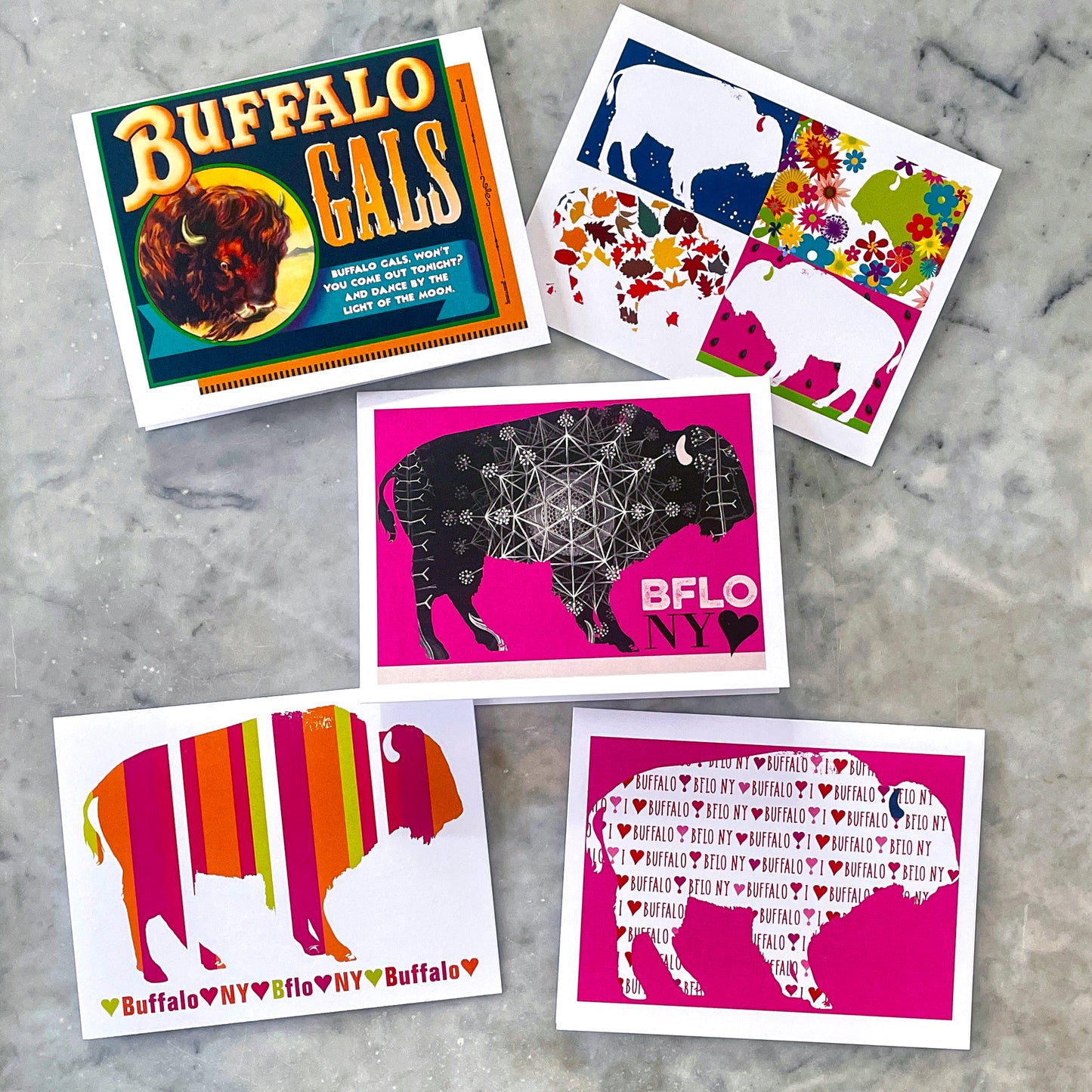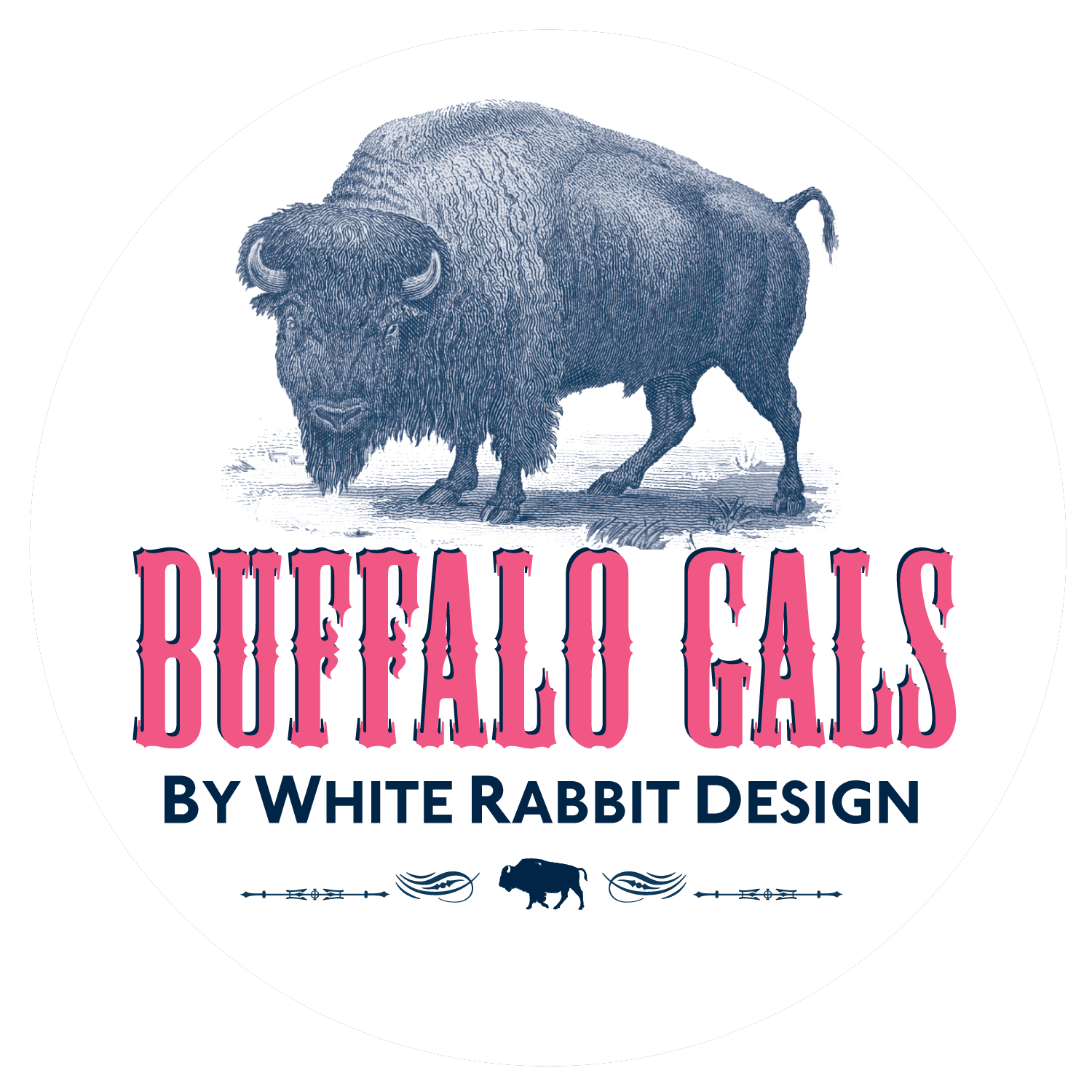Buffalo Gals
“I ❤️ Buffalo” note card set
“I ❤️ Buffalo” note card set
Regular price
$13.50 USD
Regular price
Sale price
$13.50 USD
Unit price
per
Couldn't load pickup availability
LOVED FOR: Our Buffalove best seller! “Buffalo gals won’t you come out tonight?” Show YOUR devotion for everything Buffalo with this bright and colorful set of greeting cards. Blank on the inside so you can write your own message of Buffalove!
GOOD TO KNOW: Set of 5 note cards are 5.5 x 4.25 inches folded, includes 5 blank white envelopes. Packaged with care in an “eco-friendly” plastic sleeve that is made from plants and is compostable.
BUFFALOVE: “Buffalo Gals” is an American folk tune with a meandering history: Originally published in 1844, it beckoned a young woman to come out and dance. Although credited to singer John Hodges, it seems most likely adapted from other songs and, as often happened in music of that era, moved easily between published versions and folk tunes learned by ear.
Folk versions of “Buffalo Gals” may have existed before it was performed on professional stages; the song was known as “Round Town Gals” in Virginia and West Virginia. It’s also been suggested the song originated in one of the seamier sections of 19th century Buffalo, NY. Adjacent to the Erie Canal ran “the wickedest street in the world,” where Lake Erie sailors, canal workers, lowlifes, and “ladies” of a certain reputation, frequented the city’s many waterfront dive bars.
Lyrics were often localized to suit the town as the popular song moved across the country with traveling minstrel troupes: “Charleston Gals,” “Bowery Gals,” “New York Gals,” and “Philadelphia Gals were all used as at one time or another. By 1848, “Buffalo Gals” had become the preferred version.
GOOD TO KNOW: Set of 5 note cards are 5.5 x 4.25 inches folded, includes 5 blank white envelopes. Packaged with care in an “eco-friendly” plastic sleeve that is made from plants and is compostable.
BUFFALOVE: “Buffalo Gals” is an American folk tune with a meandering history: Originally published in 1844, it beckoned a young woman to come out and dance. Although credited to singer John Hodges, it seems most likely adapted from other songs and, as often happened in music of that era, moved easily between published versions and folk tunes learned by ear.
Folk versions of “Buffalo Gals” may have existed before it was performed on professional stages; the song was known as “Round Town Gals” in Virginia and West Virginia. It’s also been suggested the song originated in one of the seamier sections of 19th century Buffalo, NY. Adjacent to the Erie Canal ran “the wickedest street in the world,” where Lake Erie sailors, canal workers, lowlifes, and “ladies” of a certain reputation, frequented the city’s many waterfront dive bars.
Lyrics were often localized to suit the town as the popular song moved across the country with traveling minstrel troupes: “Charleston Gals,” “Bowery Gals,” “New York Gals,” and “Philadelphia Gals were all used as at one time or another. By 1848, “Buffalo Gals” had become the preferred version.












